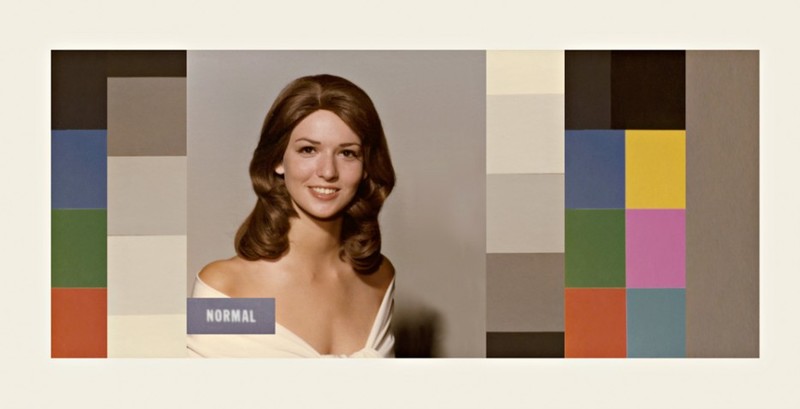Shirley Cards
Shirley Card
Shirley Cards are references photos from Kodak used for technicians to balance exposure, colors, and hues; these photographs were used all over the world, wherever Kodak printers were used. Technicians in film labs use these reference cards to make sure the colors and exposure of a photograph are correct. Invented in the 1940s and named after the first model to appear in these cards, Shirley cards were mass-produced in the 1950’s, when almost all the color film in the U.S. was produced by Kodak (Del Barco 2014).
In color film, layers of chemical film emulsion are stacked on one other, with each layer being sensitive to different portions of the light spectrum. Combinations of different chemical solutions are then used to develop those layers once they are exposed to light. This combination of different layers and solutions determines a film’s color balance. But for most of history, film emulsions were designed with little regard towards the brown, red, and yellow portions of the light spectrum and developing solutions that brought out brown, red, or yellow tones were not a priority. To this day, even with digital cameras, when white skin is photographed with darker skin colors, people with darker skin colors are easily under exposed. A temporary solution is reducing contrast and/or adding more light to darker skin ("Color Film" 2015; Roth 2012).
The design of film chemistry largely focused on a light-skinned, white consumer market, so light skin became the “idealized” and normalized skin tone. Until 1996, Shirley cards featured white women in colorful, bright outfits and were labeled with the word “normal.” These cards, photo stock, and motion picture technology reflected the limited range of film and film emulsions, which primarily targetted a white market (Del Barco 2014).
Lee, Waldo. "Kodak Shirleys." Photo.net. August 10, 2008. Accessed December 11, 2015. http://photo.net/film-and-processing-forum/00QSOq?start=10. O'Toole, Sean. "Yes, but (Some Thoughts on Broomberg and Chanarin’s New Work)." TPW R&D. Accessed December 11, 2015. http://gallerytpw.ca/rd/yes-but/. Roth, Lorna. "The Fade-Out of Shirley, a Once-Ultimate Norm: Colour Balance, Image Technologies, and Cognitive Equity." The Melanin Millennium. 2012. Canadian Journal of Communication. Accessed December 15, 2015.



